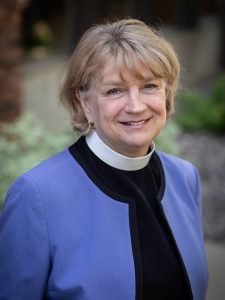 By Bishop Ann Svennungsen
By Bishop Ann Svennungsen
A Bishop, an Archbishop, and a District Superintendent walk into a museum. Though it sounds like the lead-in to a joke, it was really the start of an incredible journey.
Archbishop Musa Filibus, Superintendent Sebastian Feydt, and I visited the GRASSI Museum of Ethnology in Leipzig on September 21; one stop in a remarkable visit that Archbishop Filibus and I made after the Lutheran World Federation Assembly in Poland in September. It was a rare opportunity for the leaders of our two partner synods to meet one another; and, as it unfolded, for the three of us to imagine ways we might foster a trilateral relationship.
“As we observe Indigenous People’s Day, what work do we need to do toward in repentance and restitution?”
The days planned by our Leipzig hosts were filled to the brim – which brings me back to the visit to GRASSI Museum. Inspired by the knowledge that some of the Benin Bronzes from Nigeria were held there, we were privileged to spend the morning with Leontine Meijer-Van Mensch, the Director of the State Ethnographical Collections of Saxony (including Leipzig and Dresden). We began by viewing the Benin Bronzes and discussing the potential for restitution (the return of identity-forming, cultural, or sacred objects, among others, that were acquired in a colonial context, appropriated under unequal power relations or looting).
FOR ME, THE MOST profound, heart-wrenching discussions were about repatriation, the return of human remains of ancestors to their societies of origin. Ironically, Germany passed broad legislation to ensure that German soldiers were given the right to return to their homes for burial. Now, the same legislation guides the museums in repatriating the remains of the ancestors to their homelands.
After waiting in Germany for 100 years, the remains of 14 persons from Roebuck Bay in Western Australia were accompanied home. The individuals were members of the Yawuru and Karajarri communities, living in the mid-19th century. Kidnapped into slavery and forced to work on luggers (pearling ships), the remains of the ancestors were brought to Europe as comparative specimens, a dehumanizing practice that supported eugenics and other racist theories.
On April 15, 2019, the repatriation ceremony to remember the ancestors drew visitors from across Germany and Australia to pay their respects. A landmark memorial, known as Wanggajarli Burugun, will be built in Broome (or Rubibi) in Western Australia to establish a resting place for the ancestors, serving as a site for reconciliation and healing.
Our guide led us to a private room in the museum reserved for the relatives of the ancestors to prepare their remains for the journey to their homeland. Our small group was overwhelmed by the holiness of that space – the profound sacredness of this place for preparing the bones of the relatives, feeling the anguish of the journey that brought their ancestors to Leipzig, and seeing a tiny glimpse of hope that there might be repentance and forgiveness. It was indeed sacred ground.
As we observe Indigenous People’s Day, what work do we need to do toward in repentance and restitution? Perhaps, spending some time on the ELCA web page with information about Idinan Boarding Schools might give us a place to begin.
The journey of truth-telling and restitution is neither short nor simple. But it is holy work. Let us pray for one another as we take our next step.
